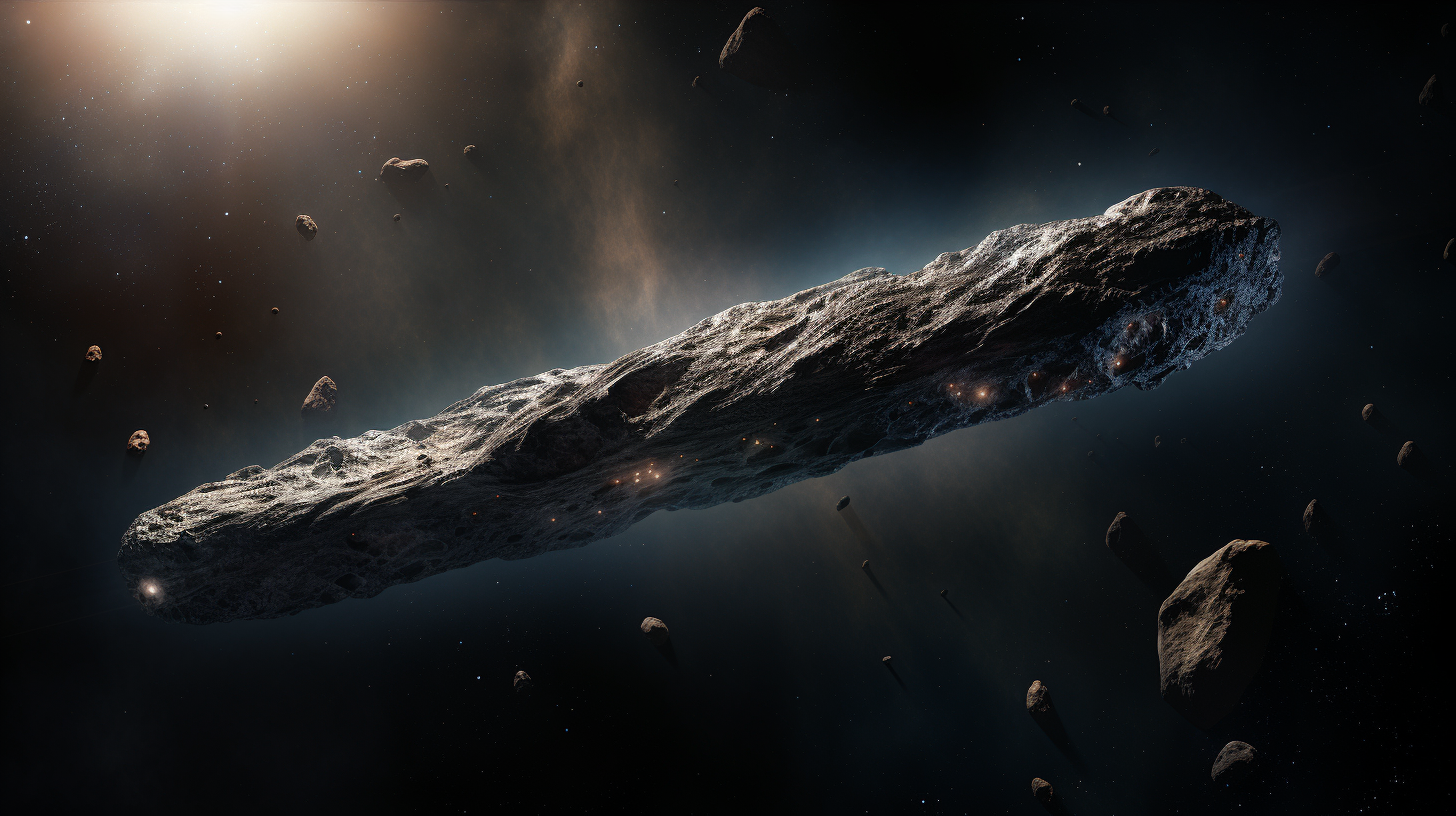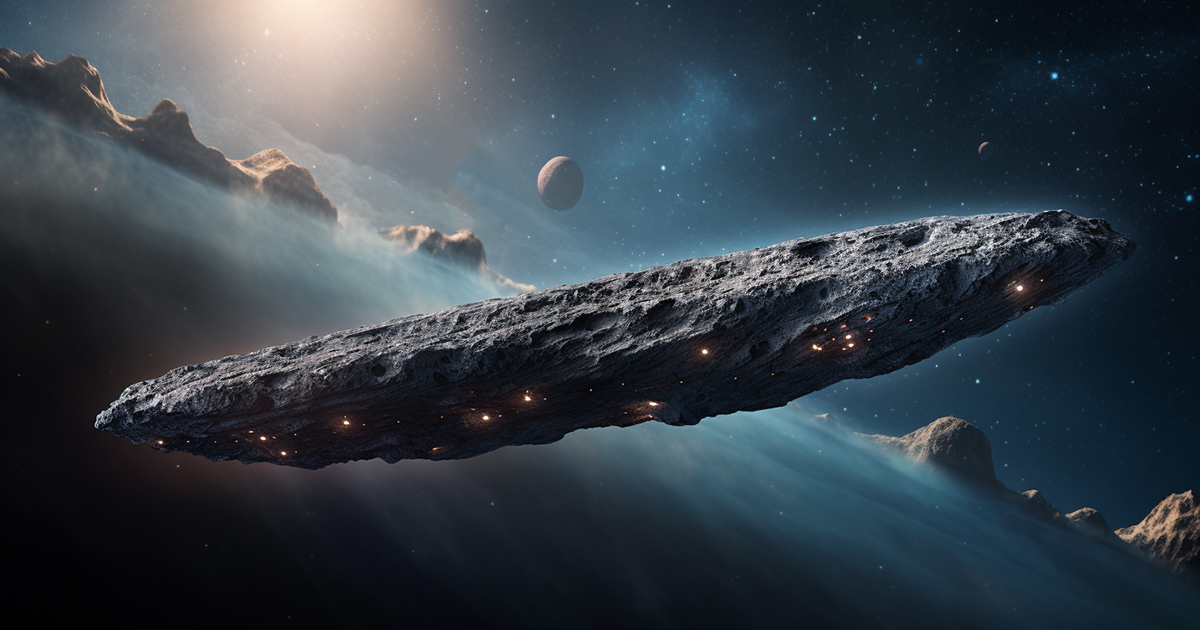Exploring the Unseen Depths
Every day, within the vast cosmos, new riddles emerge, captivating the attention of astronomers and space aficionados. On an extraordinary day, October 19, 2017, astonishment struck astronomers at the Haleakala Observatory in Maui as they stumbled upon a captivating celestial entity – ‘Oumuamua. This peculiar object defied conventional interpretations, sparking intense curiosity among scientists and triggering discussions about its possible extraterrestrial origins.
A Groundbreaking Observation
Perched atop the majestic 10,000-foot summit of Maui, the Haleakala Observatory gazes into the endless expanse of space. In 2017, astronomers witnessed a rare spectacle in the night sky – the mysterious ‘Oumuamua journeying through our solar system in an unprecedented manner.
The initial sighting of ‘Oumuamua appeared as streaks in telescope images, hinting at its remarkable velocity. Astronomers swiftly realized that this object followed an unusual hyperbolic path, diverging from the familiar orbits observed within our solar system. With its elongated shape spanning roughly 800 meters, ‘Oumuamua stood out as a unique cosmic entity with potential extraterrestrial origins.

An Interstellar Enigma
Following its encounter with the sun, ‘Oumuamua displayed an unusual behavior by gaining speed as it ventured away. This unexpected acceleration puzzled astronomers, prompting Dr. Avi Loeb from Harvard University to propose a daring hypothesis – suggesting that ‘Oumuamua might not be a typical celestial body but potentially an alien spacecraft.
The rapid acceleration of ‘Oumuamua post-solar rendezvous hinted at propulsion methods distinct from comets or asteroids. Dr. Loeb’s groundbreaking concept positioned ‘Oumuamua as a probe dispatched by an advanced extraterrestrial civilization to explore our solar system. This notion sparked deep contemplation, raising profound questions about the identity of this mysterious interstellar visitor.
Uncovering Secrets
In his pursuit of substantiating his theory, Dr. Loeb embarked on a mission to identify similar cosmic entities displaying analogous characteristics. His quest led him to a governmental meteor archive named CNEOS, collected through missile defense systems. Within this repository, he stumbled upon an object exhibiting a similar extraterrestrial origin to ‘Oumuamua – a celestial wanderer hurtling at 60 kilometers per second from beyond our solar system.
Diverging from ‘Oumuamua, this cosmic traveler did not just pass by Earth’s vicinity but transcended the Earth’s atmosphere, detonating over the Pacific Ocean in January 2014. The resultant explosion, akin to a fraction of the energy released by the Hiroshima bomb, yielded crucial insights. Dr. Loeb’s analysis revealed that this object marked the first documented interstellar meteor, comprised of materials even tougher than iron.
Implications for Mankind
The revelation of ‘Oumuamua and the subsequent exploration of its potential artificial nature have uncovered a spectrum of possibilities. Should ‘Oumuamua truly originate from extraterrestrial domains, it could revolutionize our comprehension of the universe and our position within it.
As scientists delve deeper into the enigma of ‘Oumuamua and akin cosmic phenomena, humanity stands at the brink of a monumental revelation. The consequences for our future encounters with alien life forms, and our standing within the cosmic fabric, could be profound.
Visual Display:
Concluding Contemplations
The saga of ‘Oumuamua, the distant cosmic irregularity, serves as a poignant illustration of the infinite mysteries that the universe holds. While debates regarding its true essence endure, ‘Oumuamua stands as a representation of humanity’s ceaseless inquisitiveness and unwavering pursuit of cosmic enlightenment.
